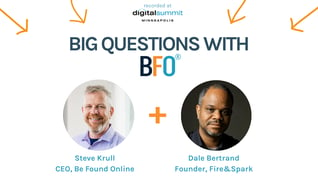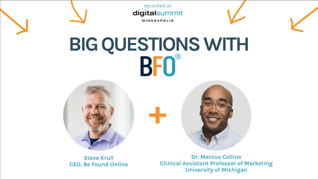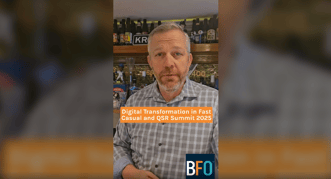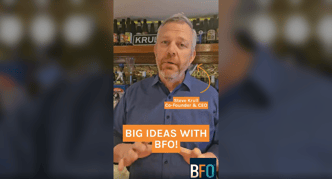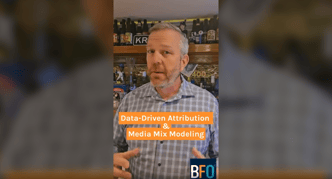What Is a Landing Page and Why are They Important?
August 21, 2024
9 Minute Read

In the ever-expanding world of the internet, think of landing pages as key touchpoints that connect online ads to conversions. They're designed to grab attention, deliver key messages quickly, and drive actions like sign-ups, purchases, or inquiries. A great landing page enhances user experience and boosts conversion rates by offering a smooth, targeted journey from click to commitment. For digital marketing agencies, perfecting landing page optimization is essential for maximizing ROI and hitting business goals.
Optimizing landing pages for success requires a few pieces working together: SEO, paid media, and analytics.
- SEO ensures your landing page ranks highly on search engines, driving organic traffic from people who are already interested. (If intended. More on that later)
- Paid Media, like Google Ads or social media, ensures you reach a targeted audience quickly, giving your landing page the exposure it needs.
- Analytics ensures your campaign is performing towards the intended goal. You can tweak and refine your landing page to boost conversions and ROI continuously when you have the analytics data to make informed decisions.
Lead Gen or Click-Through Landing Pages?
When it comes to landing pages, there are two main types that can make a big difference for your business: lead generation and click-through pages. The framework you choose will be dependent on your goals, what you are offering or asking of the audience, the metrics you’re tracking, and many other considerations.
To get you started, though, it’s helpful to understand the intended use of each type of landing page:
- Lead Generation Landing Pages are all about capturing valuable information from visitors, like their email addresses or phone numbers, usually in exchange for something enticing like a free e-book or a discount. These pages are your go-tos for building your contact list and nurturing potential customers or leads.
- Click-Through Landing Pages act as a warm-up to your main event—be it a product purchase or a service sign-up. They provide just enough info to get visitors excited and ready to click through to your main site or checkout page, making the final step feel like a no-brainer.
Both types are essential tools in your digital marketing toolkit, designed to guide visitors smoothly along the path to conversion.

Is a Landing Page a Website Page?
A landing page and a website page serve different purposes in your digital marketing strategy.
- Landing Page: Designed for a specific campaign or goal, such as capturing leads or promoting a product, and is highly focused with a clear call-to-action. It’s optimized to convert visitors into customers by targeting a particular audience segment.
- Website Page: Designed as part of your broader site structure and provides general information about your business, services, or products.
While website pages aim to inform and engage visitors, landing pages are all about driving specific actions and achieving measurable results.

Search Engine Optimization (SEO)
If you’re on certain CMS platforms (such as HubSpot), you’ll notice a distinction between landing pages and website pages when you’re building and growing your website. One of the key differences is that landing pages are not automatically added to your website’s sitemap. Depending on how you’re using your landing page, you may not want the page indexed or added to your sitemap. One example of this is if you are trying to only reach a specific audience via a targeted campaign and do not want others (outside of that audience) to discover it through online search.
If you do want your landing page added to your sitemap, indexed, and ranking in search engines, here are some considerations:
1. Keyword Research
Keyword targeting is crucial for your landing page because it attracts the right audience by focusing on relevant search terms. Using tools like Google Keyword Planner and SEMrush, you can find the best keywords to include. Focusing on long-tail keywords is a smart strategy since they often have higher conversion potential. This way, you’re not just driving traffic but bringing in visitors who are more likely to convert into customers.
2. Content Readability/User Experience
Content readability and user experience are essential for keeping visitors engaged and on your landing page. Using clear headings, bullet points, and concise paragraphs makes your content easy to digest. Add compelling imagery or a strong hero image to grab attention right away. Don’t forget mobile optimization as it ensures your page looks great and is accessible on any device. These strategies not only make your page more appealing but also improve engagement and retention, turning visitors into loyal customers.
3. On-Page SEO
On-page SEO is all about optimizing individual elements on your landing page to improve search engine visibility and user experience. Start by ensuring your primary keyword appears in key areas like the title tag, meta description, headers, and throughout the content naturally. Use internal links to guide visitors to related content on your site, which can keep them engaged longer and improve your overall SEO. Additionally, optimizing images with descriptive alt text and using schema markup can provide more context to search engines, helping them better understand and rank your page. These tactics not only enhance your page's relevance to search engines but also make it more informative and accessible to your audience.
4. Getting a Page Indexed & Website Crawling
Getting your landing page indexed and properly crawled is super important for showing up in search engine results. Make sure to submit sitemaps to search engines and fix any crawl errors that pop up. Regularly checking your indexing status in Google Search Console helps you stay on top of things and ensures your page gets the visibility it deserves. This way, more people can find you online, boosting your chances of turning visitors into customers.

Paid Media
In many instances, the purpose of a landing page is to generate a conversion from specifically targeted paid media efforts. Whether that be gated content, booking time on a sales rep’s calendar, or completing a “contact us” form, the way you build your landing page and paid media strategy are key to a successful campaign. If you’ve built a landing page for a specific audience, it’s time to make sure your paid media efforts are not only reaching that audience, but that the message is resonating with them.
We’ve outlined some considerations for you below!
1. Choosing the Right Platforms for Paid Advertising
Choosing the right platform for paid advertising is crucial for getting your landing page in front of the right audience. Whether it's Google Ads, Facebook Ads, or LinkedIn Ads, each platform has its strengths. LinkedIn is great for B2B marketing, while Instagram shines for lifestyle and fashion brands. The key is to pick the platform that best aligns with your industry and target audience. This strategy ensures your ads will reach the people most likely to be interested in what you offer, driving more traffic and conversions to your landing page.
2. Finding the Right Paid Media Message
Finding the right media message for your paid ads is key to driving the right traffic to your landing page. Crafting compelling ad copy and visuals that really resonate with your target audience makes a big difference. To nail it, try A/B testing different messages to see which ones perform best. This way, you can fine-tune your approach and ensure your ads are hitting the mark, bringing in more targeted visitors who are more likely to convert.
3. Picking the Right Metric to Track
Picking the right metric to track in your paid advertising campaign is crucial for measuring how well your efforts are paying off. Key metrics like Click-Through Rate (CTR), Conversion Rate, and Cost Per Acquisition (CPA) help you understand what’s working and what’s not. To get the most accurate picture of your success, make sure the metrics you choose align with your business goals. This way, you can fine-tune your campaigns and ensure you’re getting the most out of your paid media budget and spend.

Marketing Analytics
We started diving into marketing analytics when discussing how to identify the best metric to track in a landing page’s paid media campaign since they are going to be a critical piece of your digital marketing strategy! From keeping an eye on performance, to measuring success, to providing the right data to make strategic decisions, your marketing analytics are a foundational component to ensuring your campaigns are successful.
To optimize those campaigns towards your goals, we’ve got some general considerations and tips below!
1. Ensuring GA4 is Set Up
Getting Google Analytics 4 (GA4) set up for your landing page is a game-changer for tracking user interactions. It offers comprehensive insights into how visitors are engaging with your page, helping you understand what’s working and what needs tweaking. Make sure to follow setup guides and check that everything is properly implemented. Once it's up and running, take advantage of GA4’s advanced features to gain deeper insights and make data-driven decisions that can boost your campaign’s success.
2. Tracking the Right Key Events
Setting the right key events (formerly known as conversions) in Google Analytics 4 is crucial for tracking your campaign's success. These events—like form submissions or product purchases—mark key actions that show whether your landing page is hitting the mark. By defining and monitoring these events, you can get a clear picture of how well your page is performing and make the necessary tweaks to boost your results. It’s all about tracking what truly matters so you can focus on what works best for your goals.
3. Building Audiences
If you’re not thinking about retargeting prior to launching your paid media campaign, then you’re already behind the eight ball. In keeping with best practices, you should always have a retargeting audience building when your campaign goes live. This will allow you to target and reach users who’ve previously engaged with your ads, but haven’t yet converted. In addition, retargeting allows you to reach users who have previously converted, or are in your CRM platform, to turn one-time converters into brand loyalists.
Another opportunity is to create lookalike and predictive audiences based on who your paid media campaigns are bringing to your site. This allows you to reach users who aren’t familiar with your brand but exhibit similar interests and behaviors, and then target them via paid media campaigns to drive brand awareness and site conversions.
4. Importance of Analytics
Marketing analytics are essential for tracking your campaign’s performance and making smart decisions. They give you the data you need to understand how users are interacting with your landing page so you can optimize effectively. Regularly reviewing your analytics helps you spot trends and patterns in user behavior which is invaluable for making improvements. By using these insights and running A/B tests, you can continuously tweak your landing pages to boost performance and get better results from your campaigns.
Conclusion
Setting up and developing a solid strategy for your landing page is crucial for achieving online success. A well-crafted landing page acts as a bridge between your ads and conversions, ensuring that visitors are engaged and motivated to take action. By optimizing your page with SEO, utilizing paid media effectively, and leveraging analytics, you can drive targeted traffic, enhance user experience, and continually refine your approach.
Whether you’re focusing on lead generation or click-through pages, BFO can help you align your strategies with your business goals and audience needs! With the right setup and ongoing adjustments, your landing page can become a powerful tool for maximizing ROI and reaching your marketing objectives. Just reach out and we can show you how!
Looking for more digital marketing tips? Sign up for our monthly newsletter!

Curtiss Gulash
When Curtiss is not being a Brewmeister, brewing amazing craft beers at Big Cat Brewing Company, in Cedar, Michigan, he is BFO’s Paid Media Team Lead with a specialty in marketing automotive brands. Curtiss is known for his super-human energy and loves taking a project from start to completion. He understands the world of digital media through and through and manages to juggle multiple curveballs, be a terrific team player, and a super coach to his staff.
CATEGORIES
SUBSCRIBE TO OUR BLOG
Stay up to date with the latest industry best practices in digital marketing!
























.png?width=339&height=179&name=Webinar%20Banner%20(1).png)



.png?width=339&height=179&name=July%20Webinar%20(Newsletter).png)

.png?width=339&height=179&name=Webinar%20Banner-April-02%20(1).png)
%20(4).png?width=339&height=179&name=Webinar%20Banner-May-02%20(1)%20(4).png)




.png?width=339&height=179&name=March%202023%20Webinar%20Ad%20(autoresponder).png)


















































